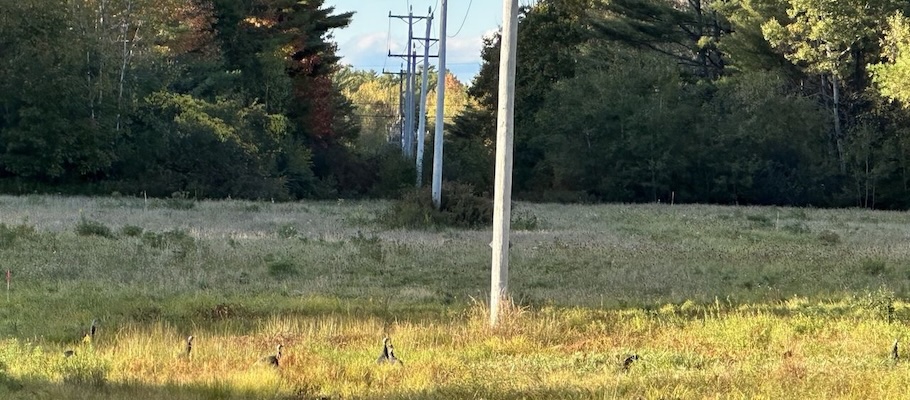About the Project
Environment

Central Maine Power (CMP) is committed to meeting high standards of environmental stewardship in the communities we serve and minimizing adverse environmental impacts. This includes impacts on wildlife such as nesting birds and endangered bats. These are the steps we are taking to mitigate environmental impacts for Section 1.
Ground mats
Timber ground mats safely disburse the weight of construction vehicles, so they do not disrupt the land below them. Ground mats are placed in environmentally sensitive areas in the corridor while work is being conducted.
Trees and Vegetation
We will be removing and trimming trees and vegetation within existing easements to accommodate the new line and reduce outage risks. We may need to talk to landowners about trees or branches outside the easements that could pose a danger to the line. For more information about tree work, visit the Trees and Vegetation page.
As a part of CMP’s vegetation management strategy, we understand the need to have the right tree in the right place. CMP has identified 30 shrubs and tree species that provide excellent habitat and wildlife benefits while not growing tall enough to interfere with our infrastructure, especially with regular trimming. Please consider them for any plantings near a transmission line.
View the Friendly to Wildlife – Safe Around Wires list (PDF).
Osprey and Wildlife
When planning to rebuild a transmission line, we proactively identify and work to avoid negative outcomes and wildlife interactions that could arise. One such issue is osprey nests. Osprey nests on transmission lines pose a risk to the safe and reliable operation of our transmission system. When osprey nests are located on transmission lines, we may relocate viable nests to platform poles that are installed near the same location as the existing nest.
CMP also strictly adheres to work restrictions related to protected species. We perform extensive wildlife surveys prior to construction to identify any protected species in the area. One such species identified in the Section 1 work area is the northern long-eared bat, which is protected under the Endangered Species Act. To protect the bat during its active season of April through October, significant tree work on this project can only take place between November and March.
View the CMP Osprey FAQs (PDF).
Need more assistance?
Get in touch
For more information about CMP’s Section 1 Transmission Line Rebuild, please contact Project Outreach